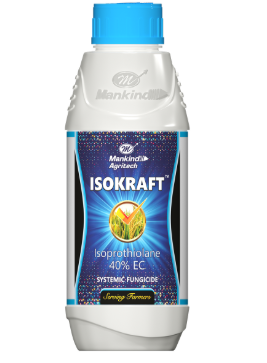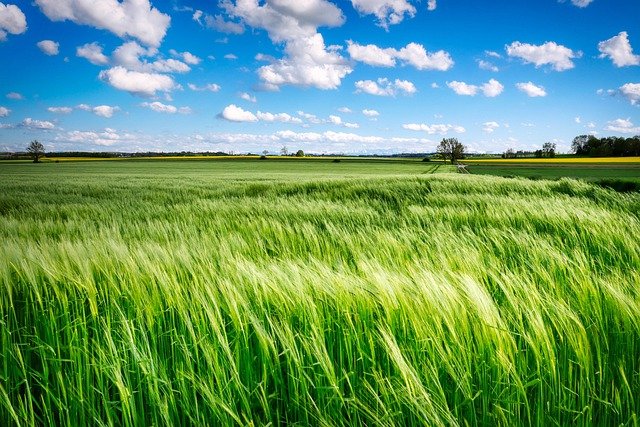Rice, or paddy, is one of the most important staple crops in India, feeding millions across the country. It is grown in diverse climatic conditions, making it prone to various diseases that can severely impact yields and quality. One of the most effective ways to protect paddy crops from these diseases is through the use of fungicides. Fungicides help control and prevent fungal infections that can damage paddy crops, ensuring healthy growth and higher productivity. In this article, we will explore the best fungicide for paddy in India, how they work, and why they are essential for successful rice farming.
Understanding Fungal Diseases in Paddy
Fungal diseases in paddy crops are among the most common and damaging threats to rice cultivation. Several fungal pathogens can affect rice plants, causing diseases such as blast, sheath blight, and rice tungro. These diseases can reduce both the quantity and quality of the harvest, making it essential for farmers to use effective solutions like fungicides.
Blast Disease (Magnaporthe oryzae): This is one of the most destructive diseases of paddy, characterized by lesions on leaves, stems, and panicles. It can cause complete crop loss if not controlled early.
Sheath Blight (Rhizoctonia solani): This disease leads to the formation of irregular lesions on rice leaves and sheaths, causing rotting and hindering nutrient absorption.
Rice Tungro: This disease is caused by a virus, often exacerbated by fungal infections. It results in stunted growth and yellowing of the leaves.
These fungal diseases can spread quickly under favorable conditions such as high humidity and excessive rainfall, making fungicide application a critical practice in paddy management.
The Role of Fungicides in Paddy Protection
Fungicides are chemical or biological agents that kill or inhibit the growth of fungi. They are crucial for controlling the spread of fungal diseases in paddy crops. Fungicides work by disrupting the metabolic processes of fungal cells, preventing the growth and spread of the fungus. Some fungicides are systemic, meaning they are absorbed into the plant, while others are contact-based and remain on the plant’s surface to protect it from fungal attack.
Using the right fungicide at the appropriate time can ensure that paddy plants remain healthy, minimizing the risk of disease outbreaks and maximizing yields.
Best Fungicides for Paddy in India

There are various fungicides available in the Indian market, each designed to target specific fungal diseases that affect paddy crops. Below are some of the best fungicides used in paddy farming in India:
Tricyclazole
Tricyclazole is one of the most widely used fungicides for controlling rice blast disease. It is a systemic fungicide that works by inhibiting the synthesis of proteins necessary for the growth of the fungus. This fungicide is effective against a range of fungal diseases and provides long-lasting protection to the rice plant. It is usually applied during the early stages of the disease or as a preventive measure.
Benefits:
Highly effective against rice blast disease.
Systemic action that protects the plant from within.
Ensures high yield by preventing crop loss due to fungal infections.
Carbendazim
Carbendazim is a broad-spectrum fungicide that is effective against many fungal diseases, including sheath blight and leaf spot. It is a systemic fungicide that is absorbed by the plant and provides protection against pathogens both above and below the soil surface. Carbendazim is known for its fast action and can prevent the spread of fungal infections in a short period.
Benefits:
Effective against a wide range of fungal diseases.
Fast-acting and provides rapid protection.
Can be used for both preventive and curative treatments.
Azoxystrobin
Azoxystrobin is a systemic fungicide that belongs to the strobilurin class of chemicals. It is used for controlling diseases like sheath blight and blast. Azoxystrobin works by inhibiting fungal respiration, preventing the fungus from growing and spreading. It also has a protective effect on the plant, ensuring that new growth is protected from infection.
Benefits:
Long-lasting protection against fungal diseases.
Suitable for preventive and curative applications.
Effective even under high humidity conditions, which are common in paddy fields.
Mancozeb

Mancozeb is a contact fungicide that is commonly used in paddy cultivation to prevent and control fungal diseases like blast and brown spot. It is a multi-site fungicide that acts on several stages of the fungal lifecycle. Although it is not systemic, Mancozeb provides excellent protection when applied regularly throughout the growing season.
Benefits:
Broad-spectrum fungicide that controls multiple diseases.
Protects the plant from external fungal infections.
Affordable and easy to use for small-scale farmers.
Pyraclostrobin
Pyraclostrobin is another strobilurin-class fungicide that provides excellent control over fungal diseases such as blast and sheath blight. It works by interfering with the mitochondrial respiration of the fungus, effectively preventing its growth. Pyraclostrobin is particularly useful during the flowering stage of the paddy plant when the risk of fungal infections is higher.
Benefits:
Effective against both preventive and curative fungal control.
Suitable for use during the critical flowering stage.
Enhances overall plant health and yields.
Chlorothalonil
Chlorothalonil is a contact fungicide widely used for controlling leaf spot diseases, sheath blight, and other fungal infections in paddy fields. It is effective when applied before the symptoms of the disease appear, helping prevent fungal infections from taking root. Chlorothalonil is an excellent choice for integrated disease management programs.
Benefits:
Strong protective effect against fungal diseases.
Works well in combination with other fungicides for broader spectrum control.
Cost-effective for large-scale paddy farmers.
Factors to Consider When Choosing Fungicides
While the fungicides listed above are effective, choosing the right fungicide for paddy crops requires careful consideration of several factors:
Disease Type: The type of fungal disease affecting your paddy crop will influence the choice of fungicide. Some fungicides are more effective against specific pathogens.
Timing of Application: Fungicides should be applied at the right stage of crop growth. Early intervention during the onset of disease or as a preventive measure is key.
Environmental Conditions: High humidity and heavy rainfall can influence the effectiveness of fungicides. Choose a fungicide that works well under your local weather conditions.
Economic Considerations: The cost of fungicides varies. Choose a product that fits within your budget while providing maximum protection for your crops.
Safety: Always choose fungicides that are safe for the environment, humans, and animals. Organic fungicides are a great choice for sustainable farming practices.
Conclusion
Fungicides play an essential role in protecting paddy crops from damaging fungal diseases in India. With diseases like rice blast, sheath blight, and leaf spot posing serious threats to rice cultivation, using the right fungicide can help farmers achieve healthy yields and improve crop quality. The fungicides listed above are some of the best options available in the Indian market, offering a combination of effectiveness, affordability, and long-lasting protection.
For farmers looking for reliable and effective solutions, companies like Mankind Agritech provide a wide range of high-quality fungicides tailored to meet the needs of paddy farmers. With their commitment to quality and innovation, Mankind Agritech offers products that ensure healthy crops and higher productivity, making them a trusted partner in modern agricultural practices.

